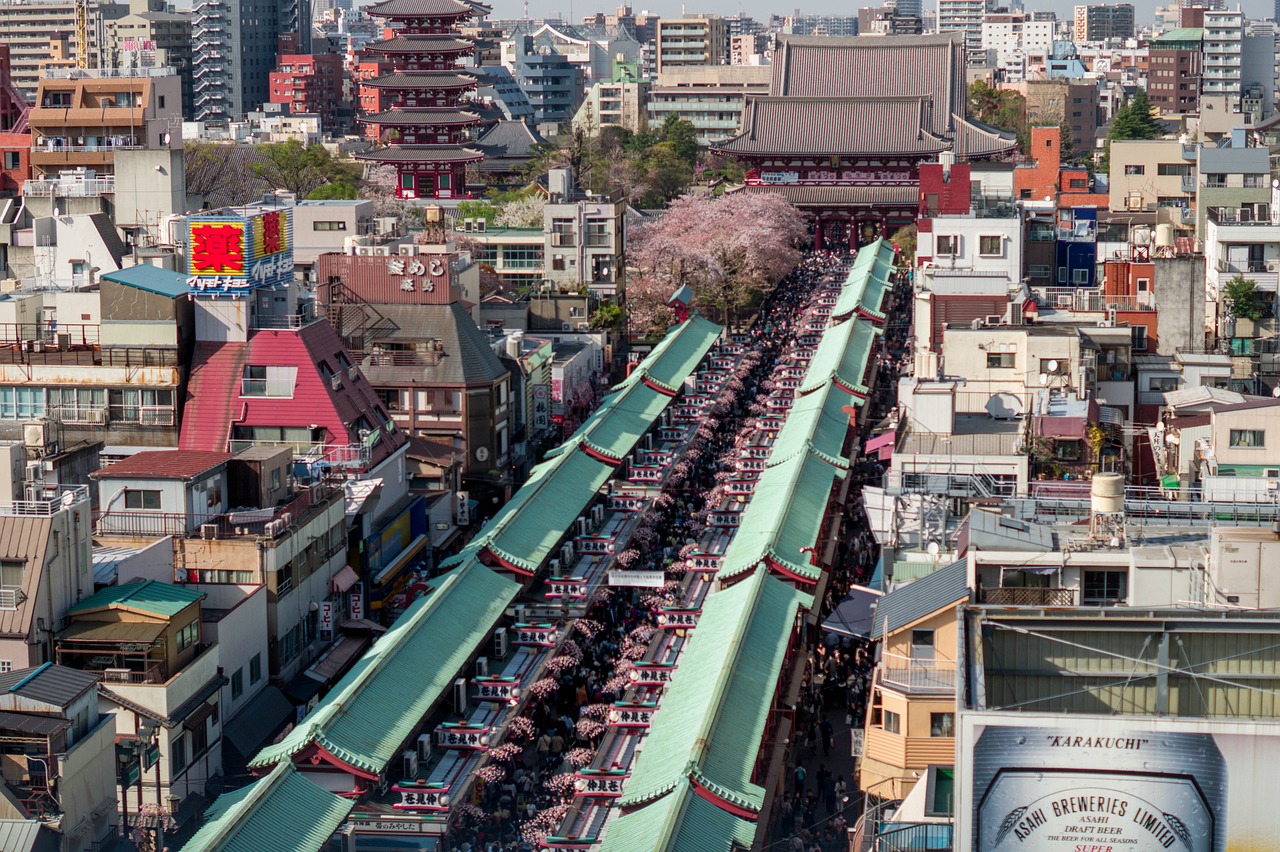Imagine taking a scenic ride in a traditional Japanese rickshaw as you are peacefully swept along the still thriving streets of Asakusa, a district in Tokyo that beautifully captures the nostalgia of an older Japan. Asakusa, with all its bustling charm, remains Tokyo’s premier spot to experience historic, cultural landmarks like the 7th-century Buddhist temple, Sensoji, or a unique shopping experience along the Nakamise street. You can get a sense of the lively entertainment from the Edo Period (1603-1867), where kabuki theaters and a vibrant red light district thrived in its heydays. Engage in a variety of appealing attractions such as the Kaminarimon (Kaminari Gate), Asakusa Shrine, the shopping streets, Rox Department Store, and Asakusa Underground Street.
Even amid the urban vibes, relish a tranquil Sumida River Cruise, or go for a stroll in Sumida Park. The district possesses an intriguing past; having risen from the ashes of significant destruction in air raids of 1945, the temple district has regained popularity, projecting an aura of resilience. To complete your culturally enriching journey, why not end your day with a gastronomic affair at the Asahi Brewery, located in the Asahi Beer Tower? With easy access through trains, rental cars, taxis, and ferries, Asakusa is your ideal gateway to discovering and relishing the authentic allure of Tokyo, Japan.
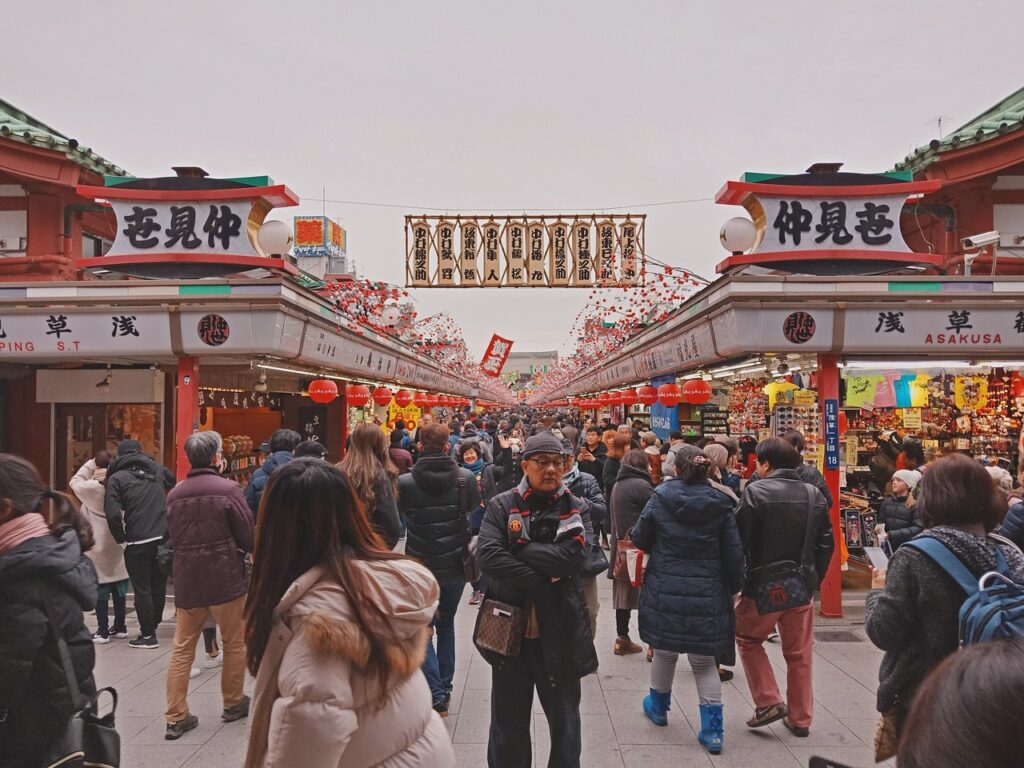
Asakusa – A Glimpse into the Past
Asakusa is an enchanting district in Tokyo, Japan that has managed to preserve the charm and atmosphere of older Tokyo. It’s a destination that’s steeped in history and culture, providing a delightful contrast to Tokyo’s modern skyscrapers and sleek buildings.
Historical Importance of Asakusa
Asakusa has long been considered a significant district in Tokyo because of its historical background. This district served as a spectator area during the Edo period, featuring vibrant gatherings and festive parades. Being a focal point for Edo culture, Asakusa has had a profound influence on Japan’s social and cultural landscape.
Preservation of Traditional Tokyo
Although Tokyo is globally renowned for its swift modernization and towering structures, Asakusa stands as a charming beacon of historical preservation. Here, old houses, temples, and shops are beautifully maintained, allowing you to catch a glimpse of the Tokyo of yesteryears. It’s like a time capsule, whisking you back to a simpler era.
Impact of Air Raids of 1945
Sadly, during the Second World War, Asakusa suffered extensive damage as a result of the 1945 air raids. Despite this devastating occurrence, the district resiliently picked up the pieces and regained its popularity, specifically in the temple area. The entertainment district, however, faced a decline, marking a significant shift in Asakusa’s atmosphere.
Sensoji – The Heart of Asakusa
At the core of Asakusa’s cultural richness is the prominent Sensoji, a popular Buddhist temple that dates back to the 7th century.
History of Sensoji
Believed to be Tokyo’s oldest temple, Sensoji is an embodiment of resilience and endurance. The temple, over the centuries, has witnessed the ebb and flow of time and societal changes, all the while remaining a steady symbol of spiritual solace and historical significance.
Unique Features of the Temple
Sensoji is not only significant because of its age but also its unique architectural features. Apart from the traditional Buddhist temple structures, there’s a prominent red lantern weighing approximately 700 kg hanging at the entrance that boldly symbolizes the temple’s presence.
Ceremonies and Rituals Conducted at Sensoji
Sensoji often thrives with the energy of ceremonies and rituals. From daily prayers to grand annual festivals, these vibrant rituals infuse Asakusa with a unique synergy that’s a delight to behold.
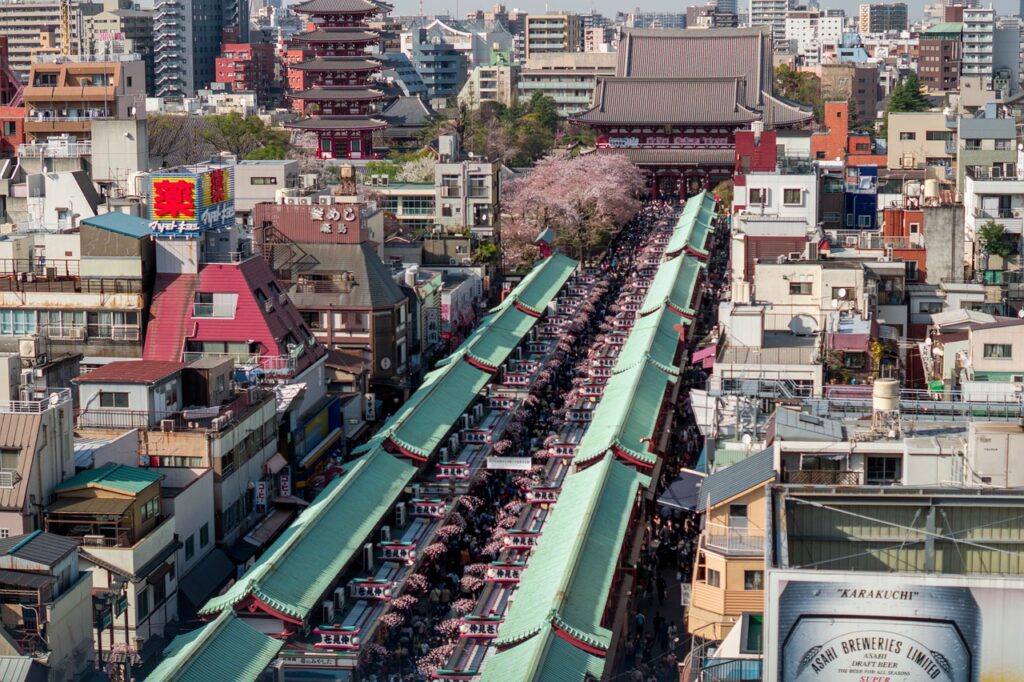
Shopping Streets of Asakusa – Nakamise and Shin-Nakamise
The shopping scene in Asakusa offers an interesting exploration of traditional Japanese delights.
Overview of Nakamise
Nakamise, the street leading to Sensoji temple, is a bustling market place that has faithfully served visitors for centuries. This long-standing tradition of commercial entrepreneurship blends seamlessly with the spiritual alignment of the temple.
Exploring Shin-Nakamise
An extension of Nakamise, Shin-Nakamise is lined with a myriad of shops offering a varied range of items, from Japanese clothes and accessories to a delightful range of local delicacies.
Popular Products and Delicacies to Try Out
During your stroll through Nakamise and Shin-Nakamise, don’t forget to indulge in culinary delights like sweet dango (rice dumplings), flavorful senbei (rice crackers) or crisp agemanju (deep-fried buns filled with sweet bean paste). Equally attractive are the traditional Kokeshi dolls, folding fans, and artisanal kitchen knives for you to buy as souvenirs.
Highlights of Asakusa – Major Attractions
Peppered with diverse attractions, Asakusa is a treasure trove of cultural hotspots.
Description of Kaminarimon
The Kaminarimon or “Thunder Gate” is undoubtedly the most recognizable symbol of Asakusa. Housing an awe-striking lantern, this gate is the first thing visitors encounter when they enter the precincts of Sensoji.
Demponin Temple
Another notable religious site is the Denpo-in temple with its tranquility-inducing garden. A walk here is akin to a gentle embrace by nature.
Unique Features of Asakusa Shrine
Located within the same compound as Sensoji, the Asakusa Shrine adds to the spiritual fabric of the district. It’s particularly loved because it also hosts the annual Sanja Festival, one of Tokyo’s liveliest religious events.
Exploring Underground Asakusa
Not many are aware of the underground scene of Asakusa that features old-style bars, restaurants, and shops. Here, you can feel the pulse of the local lifestyle and engage in fascinating conversations with the locals.
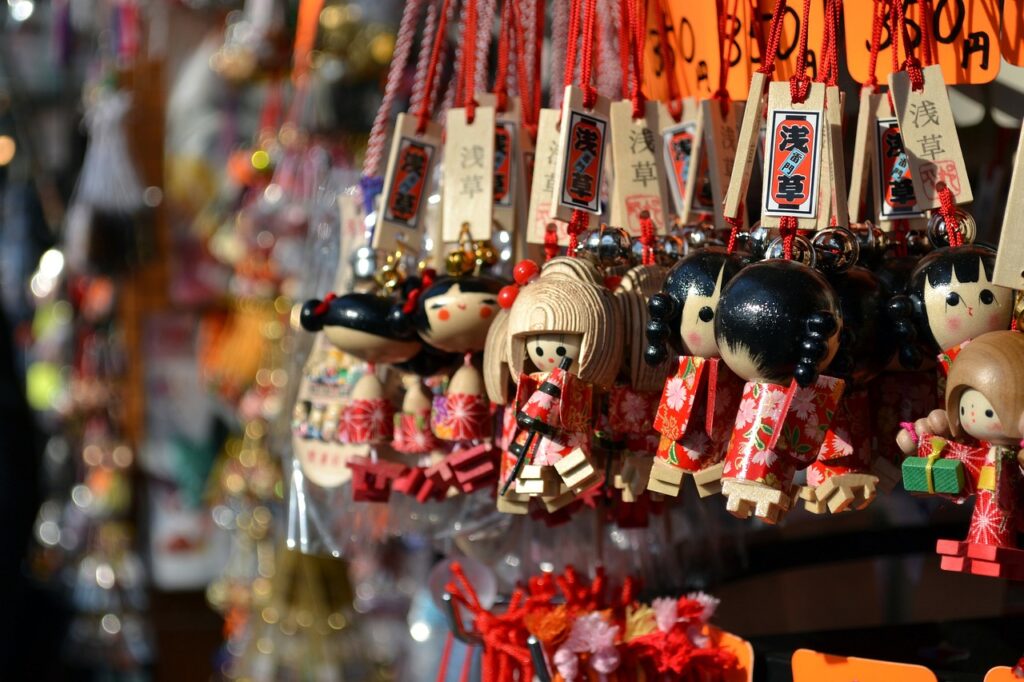
Asahi Beer Tower – A Modern Contrast
Amongst Asakusa’s traditional landscape towers the ultra-modern Asahi Beer Tower, adding a unique flavor to Asakusa.
Introduction of Asahi Beer Tower
Acting as the headquarters for Asahi Breweries, the Beer Tower is one of the district’s more recent additions and offers a stunning panoramic view of Asakusa from its top floors.
Services Offered
Not just for sightseeing, the Tower houses several restaurants and pubs that offer a varied range of Asahi beers, along with mouth-watering food choices.
Architectural Significance of Asahi Beer Tower
The Tower’s architecture demands attention. Its design is inspired by a pint of beer, creating an intriguing contrast against the traditional architecture that dominates Asakusa.
The Rickshaw Experience – A Unique Way to Explore Asakusa
For an immersive and personalized sightseeing experience, try out the unique rickshaw tours available in Asakusa.
Description and History of Rickshaw Tours in Asakusa
Rickshaws, once a popular method of transportation, are now a delightful way to navigate the winding streets of Asakusa. With knowledgeable drivers guiding you through Asakusa’s attractions, a rickshaw ride is must-try here.
What to Expect During a Rickshaw Tour
A rickshaw tour isn’t just about getting from one place to another. It tells a story about the area’s history, culture, and people, making it a vibrant story-telling ride.
How to Book a Rickshaw Tour
Booking a rickshaw tour is hassle-free with many available at major tourist spots, ready to whisk you away on an unforgettable journey.
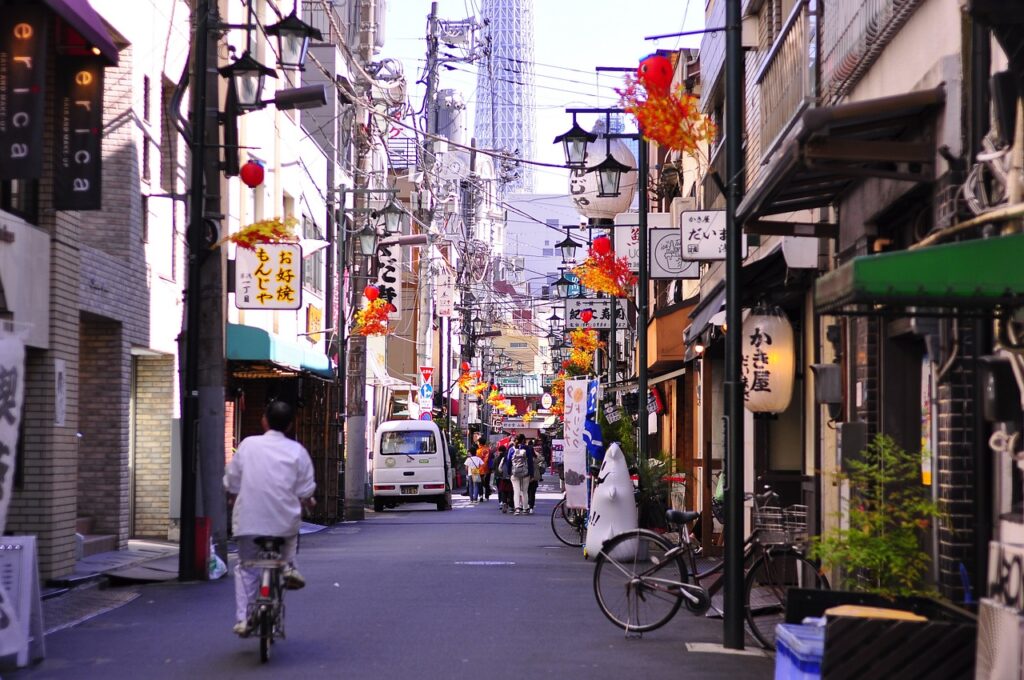
Asakusa’s Entertainment History
Asakusa has deep-rooted ties with Japanese live entertainment that significantly influenced the district’s cultural landscape.
Role of Asakusa during Edo Period
Back during the Edo Period, Asakusa was known as Tokyo’s leading entertainment district, vibrant with storytellers, kabuki performances, and bustling markets.
Influence of Kabuki Theaters
Asakusa was also a hotspot for Kabuki, a traditional Japanese drama characterized by stylized performances, elaborate costumes, and music. The influence of Kabuki is still strong in Asakusa’s cultural identity.
Transformation of the Red Light District
In addition to Kabuki, Asakusa was quite notorious for its red-light district that played its part during the Edo period. However, post the Edo era, this red-light district has been dramatically transformed, making it more friendly and inviting to the general public.
Sumida River Cruise – A Must-Try Experience in Asakusa
One of the most recommended ways to immerse yourself in Asakusa’s beauty is to embark on a Sumida River Cruise.
Overview of Sumida River Cruise
The Sumida River Cruise is a popular service that offers scenic tours of Tokyo from the water. The cruise offers a unique perspective on the city and is an exceptional way to indulge in some leisurely sightseeing.
Highlights of the Cruise
While onboard, you’ll witness an array of enchanting sights, breathtaking sunsets, the picturesque skyline, and lush green landscapes bordering the river.
How to Book a Sumida River Cruise
Booking a Sumida River Cruise is relatively straightforward, with options to book at the terminal or online in advance.
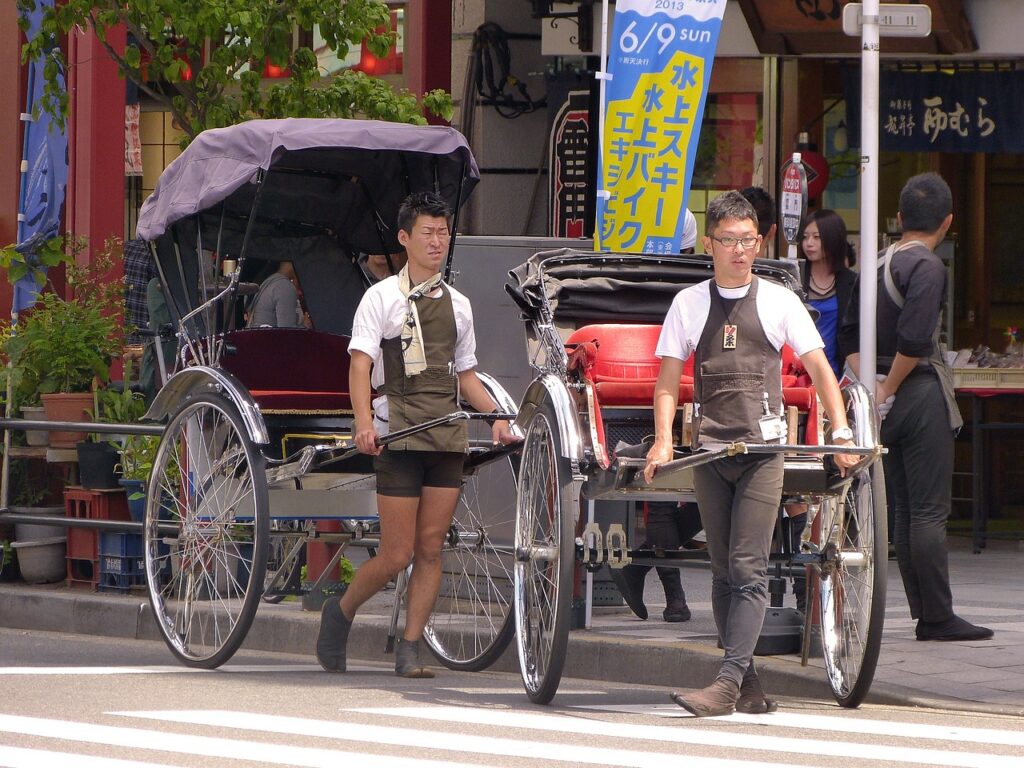
Other Attractions in Asakusa
Beyond the popular sights, there are many hidden treasures waiting to be explored.
Rokku Entertainment District
Rokku is a historic entertainment district that was once the heart of Edo culture and entertainment. It should be on your must-visit list for historical significance.
A Day out at Hanayashiki Amusement Park
Hanayashiki is Japan’s oldest amusement park featuring classic rides and attractions. A day here is guaranteed to bring joy to the young and nostalgia to the old.
A Visit to the Asakusa Culture Tourist Information Center
Meanwhile, pay a visit to the Asakusa Culture Tourist Information Center for any assistance you might need and to discover more about the area’s rich history and culture.
Getting Around Asakusa – Transport Options
Asakusa is easily accessible via an array of transport options whether you’re staying within Tokyo or coming from afar.
Public Transport Accessibility
Your first option for reaching Asakusa is the excellent public transportation network that Tokyo boasts. The subway system with Asakusa Line and Ginza Line stops at Asakusa Station, making the district easily reachable.
Rental Car Services
While not highly recommended because of the heavy traffic and expensive parking, rental car services are available if you value flexibility and freedom over convenience.
Local Taxis and Ferries
Taxis are plentiful and offer convenient travel, especially for short-distance trips. Alternatively, hop aboard a ferry for a swift journey across Sumida River, offering a charming view along the way.
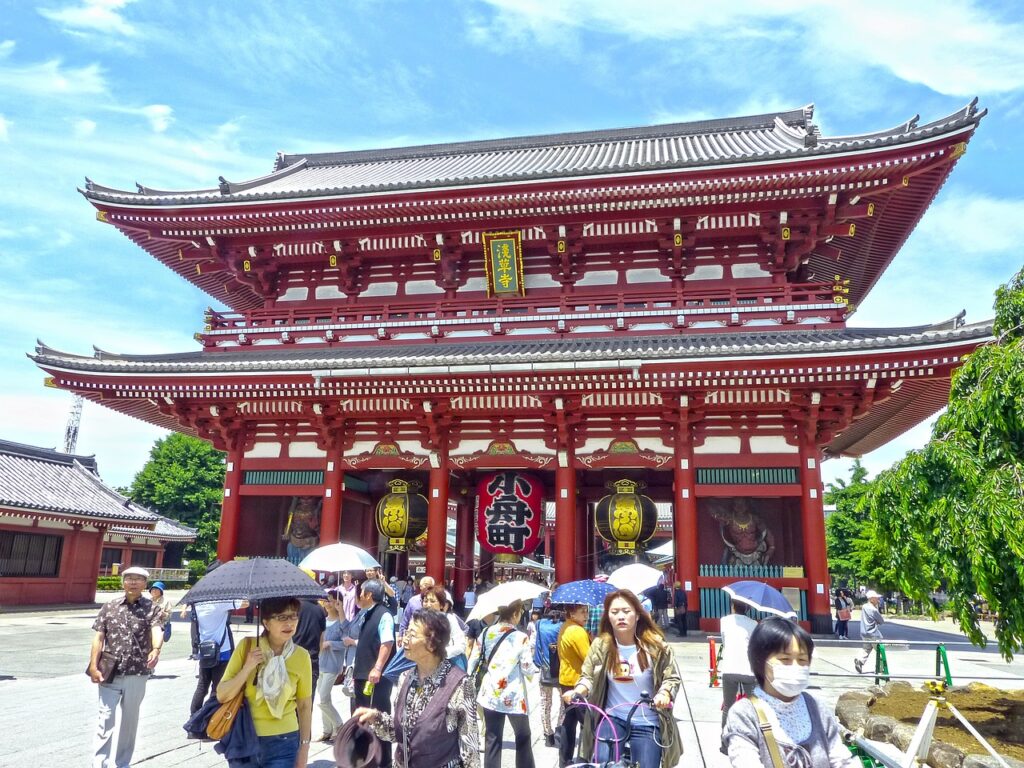
Ideal Time to Visit Asakusa
Plan your visit in the springtime to catch the mesmerizing Sakuras or in November to witness the vibrant Tori-no-Ichi Fair. However, the welcoming spirit of Asakusa shines brightly all year round, ready to captivate visitors at any time.
From antiquity to modernity, from spirituality to entertainment, Asakusa is indeed a treasure chest filled with enriching experiences. With flavorful street food, historic landmarks, unique shopping, and glorious views, this district offers a glimpse of Tokyo that is incomparable and enchanting.

